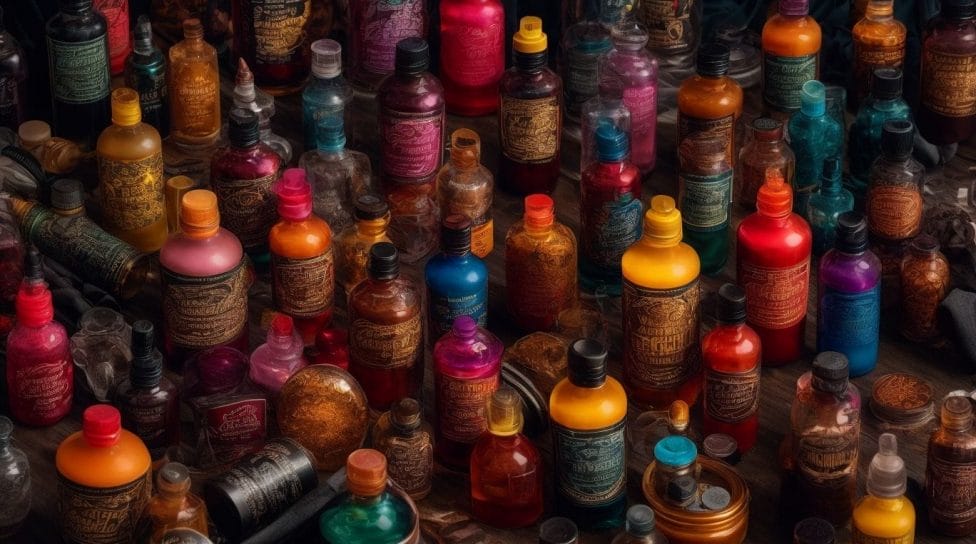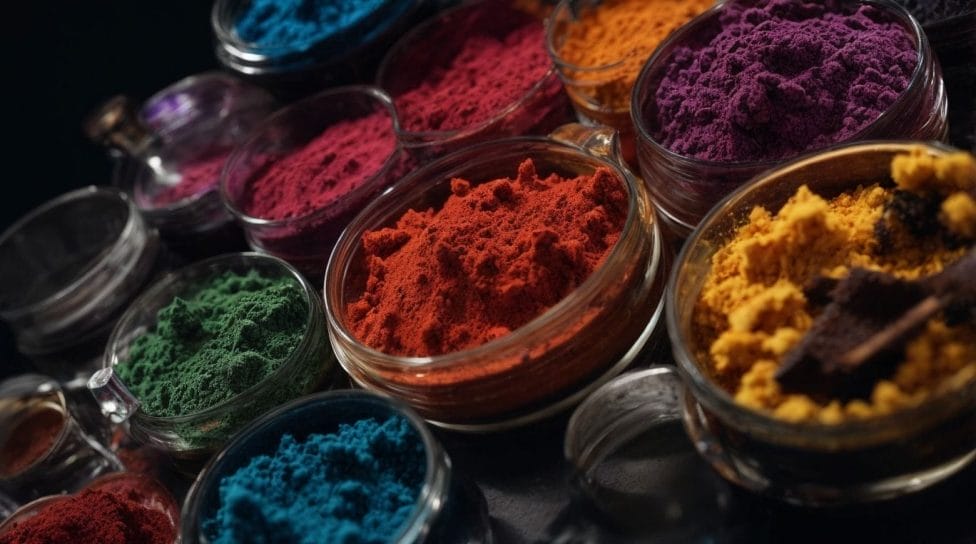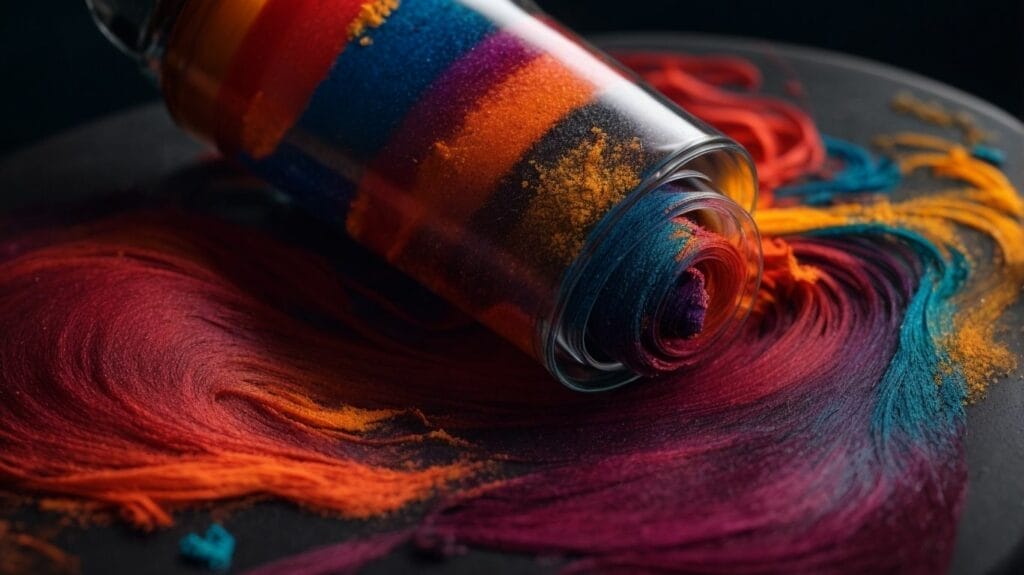Tattoo ink is a fundamental component in tattooing, and understanding its composition is important for tattoo enthusiasts and artists. Tattoo ink has various components contributing to its color, consistency, and safety. The key components of tattoo ink can be categorized into pigments, carriers, and additives. Pigments are responsible for the color of the ink; carriers help suspend the pigments and ensure smooth application, while additives provide additional properties such as UV resistance or antimicrobial effects.
Regarding types of tattoo inks, different categories are available in the market. Organic inks use natural pigments and have a reputation for being hypoallergenic. Inorganic inks, on the other hand, are made using metals and minerals, and they provide a wide range of vibrant colors. Vegan inks are specifically formulated without any animal-derived ingredients.
While tattoo ink is generally considered safe, there are some safety concerns to be aware of. Allergic reactions can occur due to certain pigments or additives, leading to skin inflammation and irritation. Toxicity is another concern, as some tattoo inks may contain heavy metals or other harmful substances.
To ensure the safety of tattoo ink, there are regulations and standards in place. Different countries have their guidelines for the composition and labeling of tattoo inks. It’s important to choose tattoo inks that comply with these regulations and are produced by reputable manufacturers.
When getting a tattoo, it’s crucial to prioritize safety and choose an artist who uses high-quality and safe tattoo inks. They should be transparent about the ingredients in their inks and follow proper hygiene practices. By understanding the components of tattoo ink, being aware of safety concerns, and selecting reputable products, you can make informed decisions and enjoy tattooing with peace of mind.
Key takeaways:
- Tattoo inks are made up of pigments, carriers, and additives. Pigments provide color, carriers help deliver the pigments into the skin, and additives enhance the performance of the ink.
- There are different types of tattoo inks available, including organic inks made from natural ingredients, inorganic inks made from minerals, and vegan inks that do not contain any animal-derived products.
- Safety concerns regarding tattoo inks include allergic reactions and toxicity. It is important to choose high-quality, reputable tattoo inks that meet regulations and standards to minimize the risk of adverse reactions.
Components of Tattoo Ink

Photo Credits: Tattooineplanet.Com by Randy Adams
When it comes to what makes up tattoo ink, it’s all about the components. In this section, we’ll dig into the intriguing world of tattoo ink and explore the main ingredients that give tattoos their vibrant and long-lasting colors. From the pigments that create stunning hues to the carriers that help deliver the ink into the skin and the additives that enhance the ink’s properties, we’ll uncover the secrets behind what goes into the creation of tattoo ink. So, let’s dive in and discover the fascinating components that make your tattoos pop!
Pigments
Pigments are the coloring agents used in tattoo inks, providing vibrant hues and designs. They come in various forms, including organic and inorganic pigments, each with its characteristics.
| Organic Pigments | – Derived from natural sources like plants and minerals |
| Inorganic Pigments | – Made from compounds like metals and oxides |
Both pigments have different color variations and properties, giving tattoo artists a wide range of choices to create unique and personalized tattoos.
A friend of mine got a tattoo featuring a vibrant orange sun. It was created using an organic pigment derived from a special flower grown in their hometown. The natural pigment added a beautiful and personal touch to their tattoo, making it even more meaningful.
Carriers
Tattoo ink carriers play a crucial role in tattoo ink, as they help to suspend the pigments and ensure smooth application. Here are some key points to consider about tattoo ink carriers:
- Composition: Carriers are typically made of water, glycerin, and alcohol. These substances help to keep the ink evenly mixed and prevent it from drying out.
- Viscosity: The viscosity of a carrier affects the flow of ink during tattooing. Tattoo artists may choose carriers with different viscosities depending on their preferred application technique.
- Safety: Carriers should be carefully selected to ensure they are safe. It is important to choose carriers that are hypoallergenic and free from harmful chemicals.
- Compatibility: The carrier used should be compatible with the pigments in the ink to ensure stability and longevity of the tattoo. Different carriers may be used for different types of pigments.
By considering these factors, tattoo artists can choose the right carrier for their tattoo ink to achieve optimal results and ensure client satisfaction.
Additives
In tattoo ink, additives are incorporated to enhance certain properties, improve color vibrancy, or extend the shelf life of the ink. The following are common additives used in tattoo ink:
- Surfactants: These additives help evenly spread the ink and ensure it adheres to the skin.
- Preservatives: They are used to prevent the growth of bacteria and fungi in the ink.
- Humectants: Additives that retain moisture in the ink to prevent it from drying out.
- Stabilizers: These additives maintain the consistency of the ink and prevent separation of pigments.
- Antioxidants: They protect the ink from oxidation, ensuring color stability.
When choosing tattoo ink, it is essential to consider the additives used. Some individuals may have sensitivities or allergies to certain ingredients. It is advisable to consult with a professional tattoo artist who can guide you toward safe and reputable tattoo ink brands.
Types of Tattoo Inks

Photo Credits: Tattooineplanet.Com by Jason Flores
Discover the vibrant world of tattoo inks as we explore the different types that exist. From organic inks to inorganic and vegan options, each sub-section offers a unique perspective on the materials used to create stunning and enduring tattoos. Get ready to dive into the fascinating realm of tattoo ink composition and learn about the diverse choices available for those seeking to make a lasting mark on their skin.
Organic Inks
Organic inks, which are derived from plants, minerals, or other natural sources, have gained popularity among tattoo enthusiasts who value natural ingredients and sustainability. These organic inks are free from harmful additives or heavy metals that may lead to allergic reactions or long-term health concerns. Moreover, they are vegan-friendly since they abstain from using any animal-derived ingredients. To make an informed decision while selecting tattoo ink, it is crucial to carefully examine the labels and ensure that the ink is certified organic. By opting for organic inks, individuals can enjoy peace of mind, knowing that they contribute to a safer and more environmentally-conscious tattooing experience.
Inorganic Inks
Inorganic inks, commonly used in the tattoo industry, are known for their vibrant and long-lasting colors. These inks are formulated using minerals and heavy metals like iron oxide, titanium dioxide, and lead. Unlike organic inks, they do not contain carbon-based compounds. One of the advantages of inorganic inks is their excellent color retention, making them less likely to fade over time compared to organic alternatives. However, it is essential to acknowledge that some of these metals may pose potential health risks. To ensure the safety of inorganic inks, strict adherence to regulatory standards and the usage of high-quality products is crucial. It is always advisable to consult with a professional tattoo artist who follows proper safety protocols.
Let me share a recent experience with a close friend who opted for a tattoo using inorganic ink. She carefully selected a beautiful design that incorporated vibrant blue hues. Initially, the ink looked stunning, but after a few weeks, she noticed irritation and redness around the tattooed area. Worried about these symptoms, she sought advice from a dermatologist. It turned out that she was experiencing a mild allergic reaction to one of the metals present in the ink. Thankfully, with proper care and treatment, her skin eventually healed. This incident serves as a reminder always to exercise caution and stay informed when deciding the type of tattoo ink to use.
Vegan Inks
Vegan tattoo inks are becoming increasingly popular as more individuals seek cruelty-free and animal-free alternatives. Here are some crucial aspects to take into account when selecting vegan inks for your tattoos:
- Ingredients: Look for inks crafted using plant-based or synthetic components while steering clear of any substances derived from animals.
- Certification: Verify any certifications, such as vegan or cruelty-free labels, to ensure the ink complies with ethical standards.
- Quality and Safety: Opt for vegan inks that meet industry criteria for quality and safety, guaranteeing they are sterilized and devoid of harmful contaminants.
- Colors and Durability: Ensure the vegan inks offer a wide spectrum of vibrant shades and deliver long-lasting results comparable to traditional inks.
By carefully considering these factors, you can choose vegan tattoo inks that align with your values and achieve magnificent and enduring tattoo art.
Safety Concerns Regarding Tattoo Ink

Photo Credits: Tattooineplanet.Com by Frank Lopez
As we dive into the safety concerns surrounding tattoo ink, let’s uncover the potential risks that come with these vibrant works of body art. From exploring the realm of allergic reactions to delving into the realm of toxicity, we’ll peel back the layers to understand the potential dangers of certain tattoo inks. Buckle up for an eye-opening ride where we uncover the facts and figures that may make you think twice before getting inked.
Allergic Reactions
Allergic reactions are a potential concern when getting a tattoo due to the components in the tattoo ink. Some individuals may experience allergic reactions to certain pigments or additives used in the ink, leading to symptoms such as redness, itching, swelling, and rash at the tattoo site. In severe cases, allergic reactions can result in blistering, scarring, or even systemic reactions. To minimize the risk of allergic reactions, it is crucial to select a reputable tattoo artist who exclusively uses high-quality, allergen-free inks. It is also recommended to undergo patch testing before getting a tattoo to identify potential allergies. If an allergic reaction does occur, seeking prompt medical attention is essential.
Toxicity
Safety is a significant concern when it comes to tattoo ink. Ensuring the safety of the ink you use is crucial to prevent any adverse health effects. Here is a table outlining some common toxic substances found in tattoo inks:
| Substance | Toxicity Level |
| Heavy metals (such as lead, cadmium, mercury) | High |
| Aromatic amines | Medium |
| Phthalates | Low |
These toxic substances can cause various health issues like allergies, skin reactions, organ damage, and even cancer. It is essential to choose tattoo inks free from harmful ingredients and comply with safety regulations.
True story: A tattoo artist unknowingly used ink containing high levels of heavy metals on a client. The client developed severe allergic reactions, requiring medical intervention. This incident highlights the importance of thorough research and selecting tattoo inks that prioritize safety to avoid such unfortunate outcomes.
Regulations and Standards for Tattoo Inks

Photo Credits: Tattooineplanet.Com by Russell Garcia
Regarding tattoo inks, regulations, and standards are paramount in ensuring safety and quality. Governments and health organizations worldwide have established guidelines to regulate the composition and usage of tattoo inks. These regulations encompass various aspects, such as acceptable levels of heavy metals, requirements for sterility, and standards for labeling. Both tattoo artists and consumers must be aware of these regulations and opt for tattoo inks that comply with them to minimize the health risks associated with tattooing.
In 2016, the European Chemicals Agency classified tattoo inks as substances carrying potential health hazards due to their chemical composition. Consequently, regulations were strengthened, and stricter controls on the ingredients used in tattoo inks were imposed throughout Europe. This further ensures the safety of tattoo enthusiasts.
Tips for Choosing Safe Tattoo Ink

Photo Credits: Tattooineplanet.Com by Eric Wright
Tips for Choosing Safe Tattoo Ink are crucial to ensuring a positive tattoo experience and minimizing potential health risks. Here are some tips for selecting safe tattoo ink:
- Research: Look for reputable tattoo ink brands that prioritize safety and have a good track record.
- Ingredients: Check the label for a list of ingredients and avoid inks that contain harmful substances like heavy metals or unknown chemicals.
- Certifications: Look for inks that meet regulatory standards, such as those approved by the FDA or certified by health agencies.
- Artist’s recommendation: Consult with an experienced tattoo artist who can recommend safe and reliable ink brands based on their professional experience.
Facts About What Are Tattoo Ink Made of?
- ✅ Tattoo inks consist of pigment and carrier, with pigment providing color and carrier keeping it evenly mixed.
- ✅ Historically, tattoo inks were made from minerals and carbon, but modern inks contain metallic salts, vegetable-based pigments, and plastic-based pigments.
- ✅ Some tattoo inks contain metals like mercury, copper, and cobalt, which can cause allergic reactions.
- ✅ Plastic-based tattoo inks derived from heat-resistant plastic can cause significant skin allergic reactions.
- ✅ Certain tattoo inks can glow in the dark or under ultraviolet light, potentially posing health risks.


